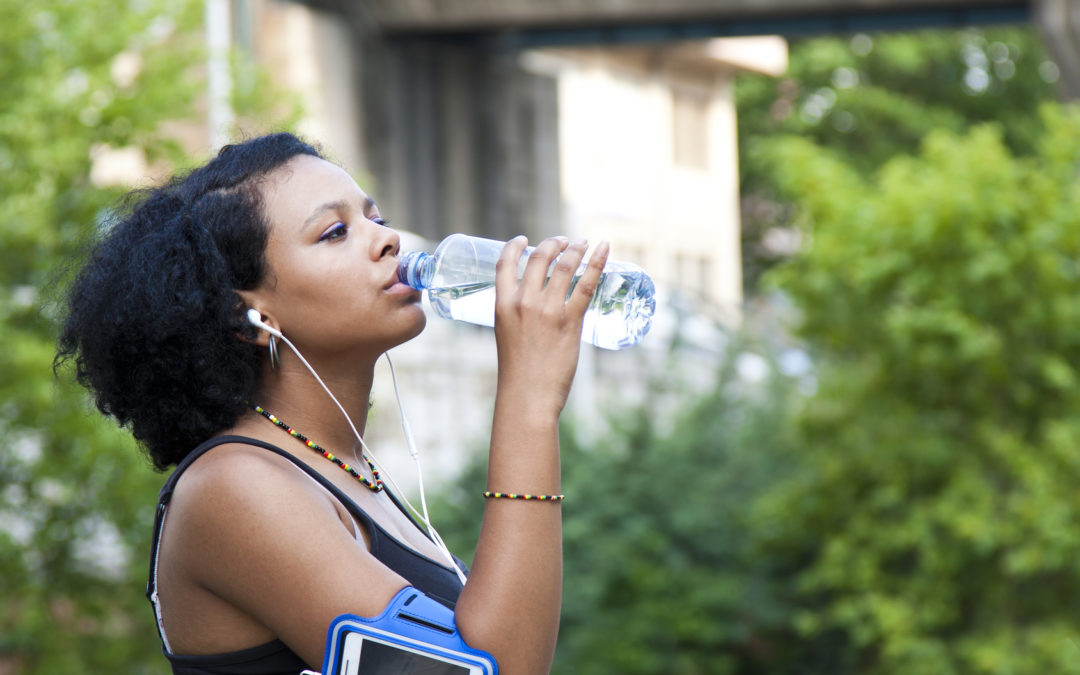One thing is for sure: we’re not drinking enough water.
None of us. And it’s damaging our health.
That was the message of a recent article in The New York Times:
“I wonder how we all survived — and even thrived — in our younger years without the plethora of water bottles that nearly everyone seems to carry around these days.
In reading about the risks and consequences of dehydration, especially for the elderly and anyone who exercises vigorously in hot weather, it’s nothing short of a miracle that more of us hadn’t succumbed years ago to the damaging physical, cognitive and health effects of inadequate hydration.
Even with the current ubiquity of portable water containers, far too many people still fail to consume enough liquid to compensate for losses suffered especially, though not exclusively, during the dehydrating months of summer.
For those of you who know or suspect that you don’t drink enough to compensate for daily water losses, the good news is you don’t have to rely entirely on your liquid intake to remain well-hydrated.
Studies in societies with limited supplies of drinking water suggest you can help to counter dehydration and, at the same time, enhance the healthfulness of your diet by consuming nutritious foods that are laden with a hidden water source. Plant foods like fruits, vegetables and seeds are a source of so-called gel water — pure, safe, hydrating water that is slowly absorbed into the body when the foods are consumed.”
The truth is, dehydration can be very unhealthy, leading to fatigue, dizziness, constipation, kidney stones, appetite loss blood pressure trouble.
But that isn’t news. We all know, at some level, that we need to be drinking more water. Whether or not it’s the 8 glasses of water per day that’s long been recommended might be up for debate, but there’s no question that when we’re hydrated we feel better.
Understanding that isn’t the problem.
Keeping on top of hydration is more of a concern.
According to the Army, the average person should drink 75% of their body weight in water each day, adding additional water depending on how dry the local climate is and how much physical activity they’re doing. That means, for an active, 150 pound person, they’ll need to drink more than 144 ounces of water each day, or nine ounces per hour. That works out to more than eight average bottles of water every 24 hours, and more depending on how hot it is and what you’re doing.
Using that scale, nearly three-fourths of Americans would qualify as chronically dehydrated, which can impair cognitive performance by up to 20%, affecting reaction time, mental accuracy and memory.
But it is notoriously difficult to notice and diagnose dehydration early on. Thirst is a notoriously poor indicator — we can lose over 1.5 liters of fluid before even feeling thirsty, at which point we’d be well on the way to being dehydrated.
One of iSelect’s portfolio companies is working to address this problem by using biological clues in sweat to monitor hydration levels and warn of impending trouble. Nix is developing a wearable, single-use patch that monitors hydration in real-time, with a biosensor that can detect changes in an individual’s sweat as he or she dehydrates and rehydrates. It can tell you when to drink, what to drink, and how much to drink.
Nix is starting out with patches for athletes but is looking well beyond that niche for future products. In addition to hydration monitoring across a variety of categories, including health and wellness, beauty, women’s health, infant health and nutrition, the company’s sensor platform can be chemically tuned to respond to a wide range of environmental and biological stimuli, measuring subtle changes in biomarkers present in body fluids such as sweat, tears, blood, urine, breast milk, and saliva. This means potential applications in skin care, oral health, neonatal nutrition, and more.


